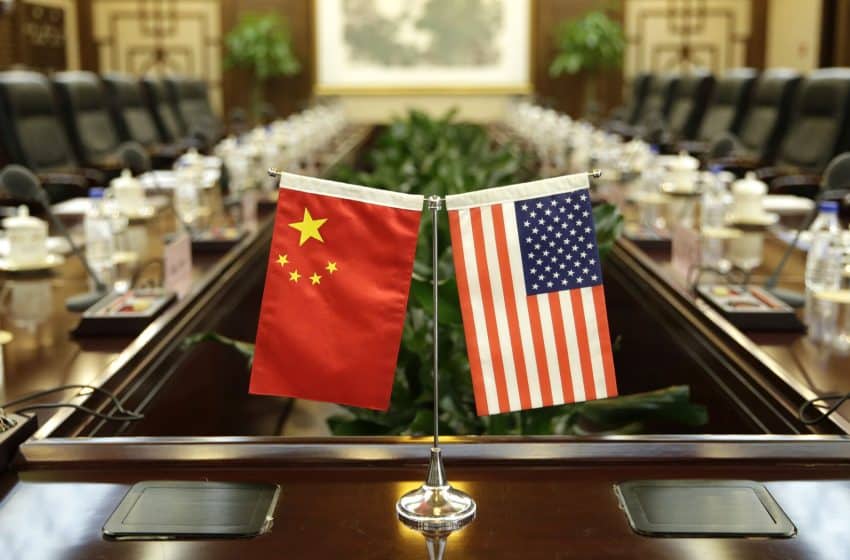Summary of David Firestein’s Talk – “The South China Sea: The Diverging Strategic Assumptions and Perceptions of the United States and China”
Executive Summary
The South China Sea (SCS) has become a central issue in the U.S.-China relationship. Despite widespread framing (in the United States, China, Southeast Asia and around the world) of the issue as one of contention and even a potential cause of significant conflict between the two countries, the United States and China disagree on less – at least as a matter of official, declared policy – than is commonly presumed. Much of the friction between the United States and China over the South China Sea instead stems from the misalignment, misunderstanding or divergence of strategic assumptions and, also, from sharply differing strategic perceptions about the same sets of facts. The key to generating lasting progress on this complex, presently “stuck” issue is to map more precisely where the diverging interests and policies actually are – and where they are not; to lay bare the little-discussed strategic assumptions made by both sides and to assess which of those assumptions are accurate and which are not; and likewise, to catalogue and air out the perceptual differences – perhaps as a prelude to evaluating the merits of the two sides’ respective perceptions and trying to generate movement on some of those perceptions. Though the official positions of the two nations, as well as the five other SCS claimants (which are Vietnam, the Philippines, Malaysia, Brunei and Taiwan), are unlikely to change in the foreseeable future, modest but meaningful progress, and even some degree of trust-building, on this seemingly intractable issue can be achieved by getting “under the hood” of the issue in these new ways. EastWestInstitute’s “China, East Asia and the United States” (CEAUS) program seeks to focus on these areas in our prospective SCS-related convening and analytical work.
David Firestein, Perot Fellow and Senior Vice President of the EastWest Institute, joined students at Emory University on Monday, October 17, 2016 to discuss the strategic assumptions and perceptions between the U.S. and China in the South China Sea. Firestein contends media in both states have framed the territorial disputes in the South China Sea as a zero-sum issue between the U.S. and China, a distorted framing that perpetuates the dominant adversarial narrative currently in place. To effectively analyze the dispute, Firestein claims we must go beyond this conventional media narrative.
A water conduit that is home to one-third of the world’s international trade, the South China Sea is part of the Pacific Ocean, and encompasses an area of 1.4 million square miles. China, Taiwan, Vietnam, Malaysia, Brunei, and the Philippines all seek claims to territory or waters in the South China Sea. While the U.S. is not a claimant in the South China Sea, the peaceful resolution of this dispute is a stated U.S. national interest.
Firestein noted that, notwithstanding the dominant adversarial framing commonly seen in the media and policy communities, the United States and China actually agree, at least as a matter of declared policy, on some important elements of the South China Sea issue:
1. Each country accepts the other as a key player in the region.
2. Both have articulated commitments to the concept of freedom of navigation, with neither side seeking to impede trade through the South China Sea.
3. Both countries state that they want to see the South China Sea disputes resolved peacefully.
This is not to say, however, that the two countries are without disagreement. In addition to U.S. concerns about evident Chinese efforts to intimidate and its fellow claimants in some cases, the United States also has concerns about China’s so-called “nine-dash line” claim. The nine-dash line is essentially a U-shaped boundary encompassing some 85 to 90 percent of the South China Sea; thus far, it has not been fully defined or articulated by China, and thus constitutes an ambiguous, though potentially problematic, claim in the South China Sea.
In a case brought by the Philippines challenging the legality and validity of China’s nine-dash line claim, the Permanent Court of Arbitration ruled on July 12, 2016 that China’s nine-dash line has no legal or historical basis. While the ruling is a symbolic defeat for China, the Court has no enforcement capabilities and China has declared it null and void.
Transitioning to the issue of the strategic assumptions which underpin U.S. and Chinese policies and actions, Firestein encourages researchers to probe the unspoken assumptions, and in this regard, he proposes a number of provocative questions. One such question: do the United States and China even want to resolve the issue, or is a solution worse than the problem? Or is the status quo in effect the optimal scenario for one or both of the countries?
Another assumption Firestein challenges is the idea that declared national doctrine and policy represent each nation’s actual strategic intentions. Both the United States and China, he observed, tend not to take the other’s claims about its intentions at face value; for example, the United States doesn’t believe that the airstrip that China recently constructed in the Spratly Islands is designed merely for civilian and humanitarian purposes, while China sees the U.S. pivot or rebalancing to Asia as far less benign than the United States portrays it to be in official statements.
There are also diverging perceptions around the issue of the South China Sea. For instance, China believes history trumps law when it comes the issue of the legitimacy of its claims in the South China Sea, while the United States attaches greater importance to established international law (and in this case, UNCLOS in particular). China sees its own actions as benign and the U.S., along with the Philippines and Vietnam, as instigators of recent tensions in the South China Sea; the United States takes exactly the opposite view, seeing China as the precipitator of those tensions.
Firestein concluded by observing that while certain the disagreements between the United States on the South China Sea are real, they are often overstated, with potentially damaging repercussions. Though the competing territorial and maritime claims are unlikely to be resolved any time soon, Firestein believes that the United States and China are unlikely to go to war over the South China Sea. That said, if left unaddressed, the situation in the South China Sea will continue to be a trust-drainer in the U.S.-China relationship. With more thoughtful probing of the doctrines, policies, assumptions and perceptions, the issue can be managed better, thus generating a higher-quality status quo for all involved.
Written By: Paul Vizza









